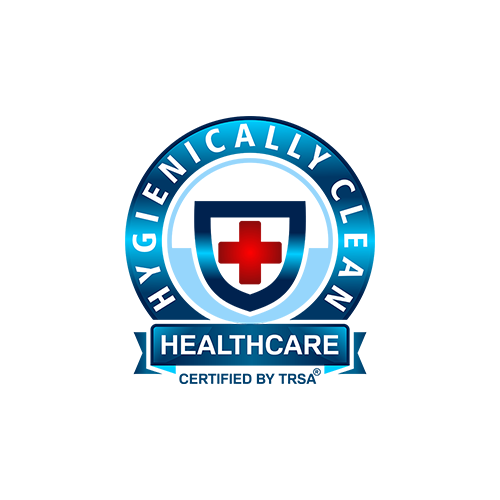
Antimicrobial scrubs can serve a small but important part in reducing the risk of infection spreading from a medical professional to a patient or another staff member. The logic is simple — the faster dangerous microbes die and the less distance they can travel, the fewer chances there are for these microbes to infect an individual at a healthcare facility.
How Do Antimicrobial Scrubs Work?
Antimicrobial scrubs work by utilizing some combination of antimicrobial materials and sprays, with the specific materials and sprays used varying, to give scrubs antimicrobial properties. These scrubs don’t make a wearer immune or even particularly resistant to microbes, but they do make it much less likely that a wearer will carry microbes from one location to another.
Antimicrobial clothing can be thought of as existing on a spectrum. On the weakest end of the spectrum are items with little to no antimicrobial properties. On the other end would be clothing with extreme antimicrobial properties.
Research is ongoing into how to make healthcare work uniforms more antimicrobial. There are still areas we don’t fully understand, especially regarding what makes effective antiviral materials, but technology has advanced far enough that antimicrobial scrubs are far more than just a gimmick.
For businesses interested in this topic, we also recommend this article on surgical drapes and how different types can contribute to surgical site infection risk.
How Can Antimicrobial Scrubs Help in a Healthcare Setting?
One point of weakness in almost any healthcare setting is that it fundamentally requires gathering patients with various types of infections together and having staff members travel between those patients. While this allows many more people to benefit from a smaller pool of medical resources and expert staff than if they were spread out, it’s still important to consider.
High risk of infection is why good hygiene and cleaning practices are so critical in medical settings. It can stop the spread of infection and save lives.
While antimicrobial clothing obviously isn’t the only step that needs to be taken to reduce infection transmission risk, it’s certainly a net positive. The staff members equipped with scrubs are generally those who will be spending the most time with sick patients and traveling between different areas in a healthcare setting. This means the risk that dangerous microbes might travel with them is significant. If even a small amount of dangerous material comes with these staff members into the room of a vulnerable patient, such as someone young, old or with a compromised immune system, it could potentially be life-threatening to that individual and cause an avoidable tragedy.
Are Antimicrobial Scrubs Ever Overkill?
There are downsides to constantly killing microbes. Many serve important purposes and there is sometimes a risk of fostering an environment for especially dangerous bacteria through the overuse of certain antimicrobial products. However, there are no known downsides to equipping staff members with antimicrobial scrubs beyond the potential increase in cost compared to the alternative.
This isn’t like overusing antibiotics. These scrubs just make it harder for staff to carry dangerous microbes with them as they travel.
If a staff member is even somewhat likely to encounter a patient or individuals who have been meeting with patients, it’s a good idea for them to be equipped with antimicrobial healthcare uniforms. It’s an added layer of defense that helps keep the whole site safe. If a staff member is unlikely to meet many other patients or staff in their day-to-day duties, such as an accountant, it may be less beneficial to equip them with antimicrobial scrubs.
Other Antimicrobial Gear to Consider
When considering antimicrobial equipment, it’s important to examine what is traveling between staff members and patients as a healthcare business is in operation. The more humans who touch or get close to an article of clothing or piece of equipment, the more important regular cleaning of that item becomes and the more advantageous antimicrobial properties will be for it.
Some gear that may be less obvious to someone who hasn’t closely examined this issue includes clipboards, electronic devices, ID badges and writing utensils.
While choosing gear for antimicrobial properties is a good start, training is also important. Staff members need to be kept aware of the real danger seemingly small decisions, such as bringing an object near one patient and then another, can potentially have, especially when a patient is highly infectious or vulnerable. There should be rules in place to prevent the spread of infection and these rules need to be continually enforced to stay effective.
Alsco Uniforms Medical Linens Services
Much of operating a healthcare business is about incrementally controlling the odds that a preventable issue occurs, so the final odds of that occurrence are as low as feasibly possible. Using antimicrobial scrubs isn’t a major investment, nor is it particularly difficult to get staff to do regularly. Considering staff members are often the most mobile part of a healthcare business, traveling among patients and staff members, using antimicrobial scrubs and similar gear should be an easy decision.
At Alsco Uniforms, we offer a wide range of services that healthcare businesses looking to stay equipped and ready to serve their patients will find useful. One such service is the ability to rent healthcare linens, freshly cleaned and high quality, so that your business can better focus on what it specializes in: serving your patients. Our uniform cleaning service ensures hygienically clean scrubs for every shift. Reach out to us today to learn more about how we can simplify the medical linen management for you.
References
Antibacterial and Antiviral Functional Materials: Chemistry and Biological Activity toward Tackling COVID-19-like Pandemics. (December 2020). ACS Pharmacology & Translational Science.


